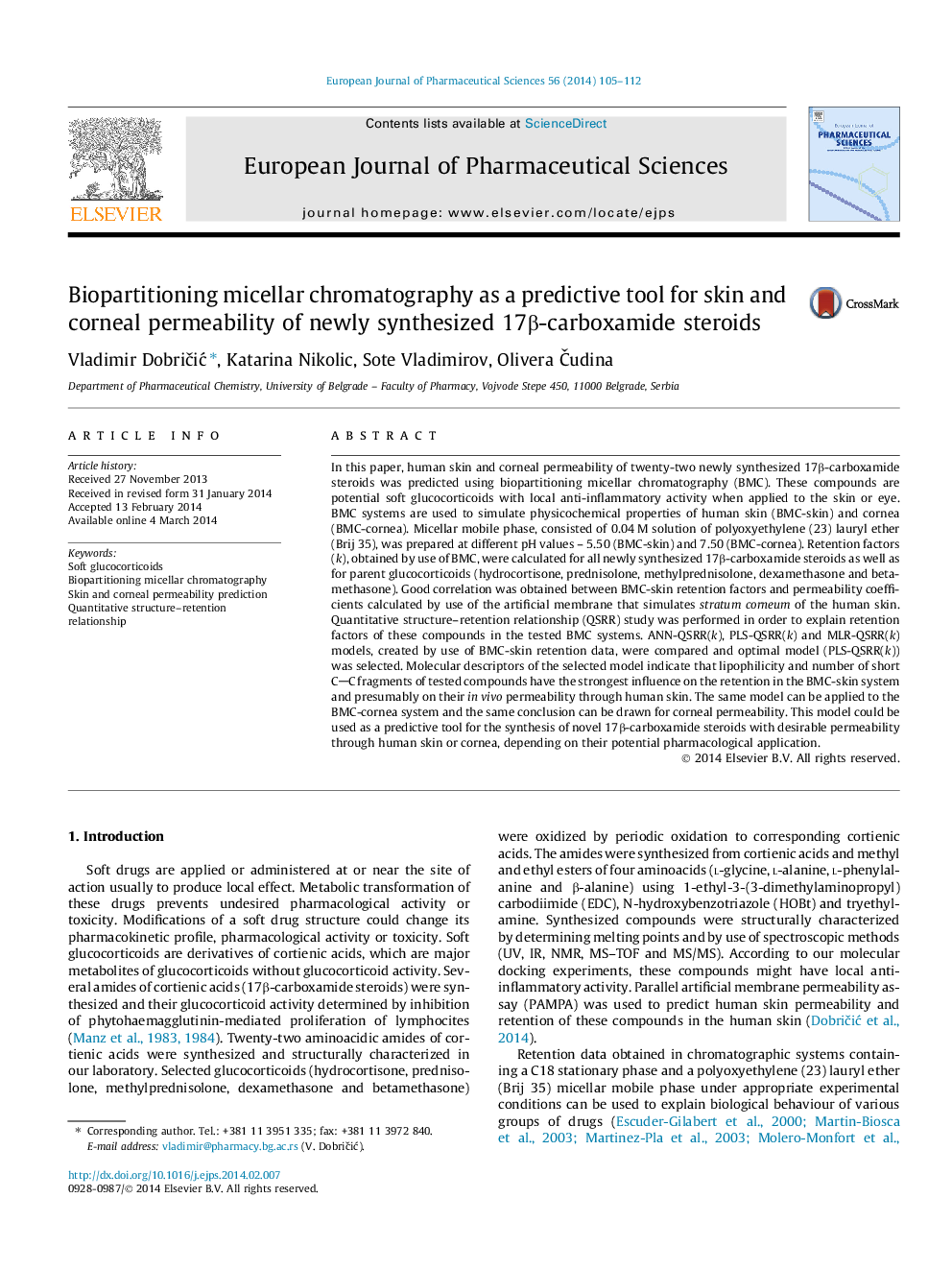| کد مقاله | کد نشریه | سال انتشار | مقاله انگلیسی | نسخه تمام متن |
|---|---|---|---|---|
| 2480606 | 1556194 | 2014 | 8 صفحه PDF | دانلود رایگان |

In this paper, human skin and corneal permeability of twenty-two newly synthesized 17β-carboxamide steroids was predicted using biopartitioning micellar chromatography (BMC). These compounds are potential soft glucocorticoids with local anti-inflammatory activity when applied to the skin or eye. BMC systems are used to simulate physicochemical properties of human skin (BMC-skin) and cornea (BMC-cornea). Micellar mobile phase, consisted of 0.04 M solution of polyoxyethylene (23) lauryl ether (Brij 35), was prepared at different pH values – 5.50 (BMC-skin) and 7.50 (BMC-cornea). Retention factors (k), obtained by use of BMC, were calculated for all newly synthesized 17β-carboxamide steroids as well as for parent glucocorticoids (hydrocortisone, prednisolone, methylprednisolone, dexamethasone and betamethasone). Good correlation was obtained between BMC-skin retention factors and permeability coefficients calculated by use of the artificial membrane that simulates stratum corneum of the human skin. Quantitative structure–retention relationship (QSRR) study was performed in order to explain retention factors of these compounds in the tested BMC systems. ANN-QSRR(k), PLS-QSRR(k) and MLR-QSRR(k) models, created by use of BMC-skin retention data, were compared and optimal model (PLS-QSRR(k)) was selected. Molecular descriptors of the selected model indicate that lipophilicity and number of short CC fragments of tested compounds have the strongest influence on the retention in the BMC-skin system and presumably on their in vivo permeability through human skin. The same model can be applied to the BMC-cornea system and the same conclusion can be drawn for corneal permeability. This model could be used as a predictive tool for the synthesis of novel 17β-carboxamide steroids with desirable permeability through human skin or cornea, depending on their potential pharmacological application.
Figure optionsDownload high-quality image (125 K)Download as PowerPoint slide
Journal: European Journal of Pharmaceutical Sciences - Volume 56, 2 June 2014, Pages 105–112